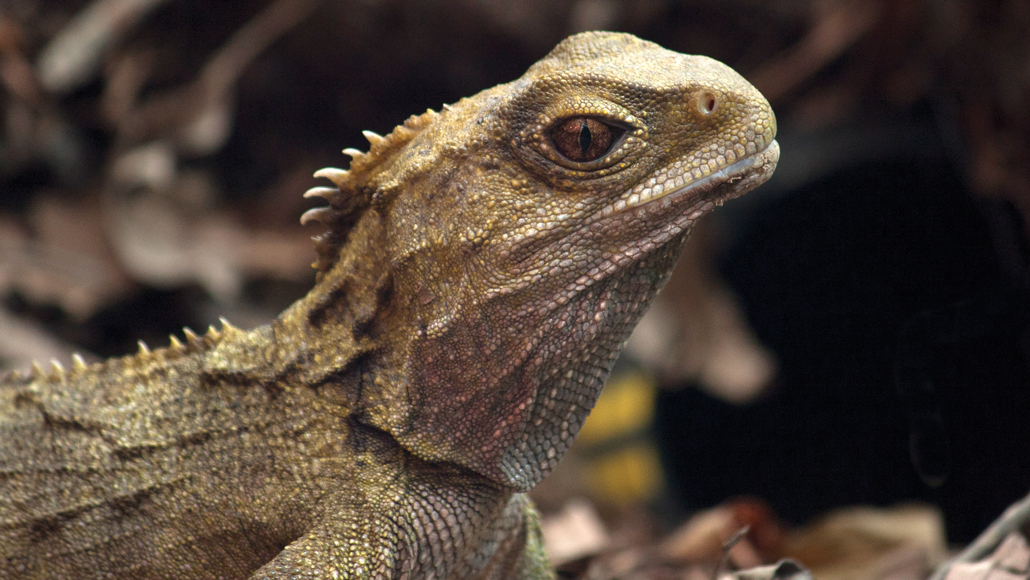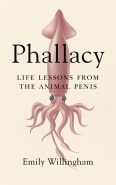
Tuatara are proof that, for some species, the penis is not an essential organ.
brackish_nz/iStock/Getty Images Plus
- More than 2 years ago

Phallacy
Emily Willingham
Avery, $27
We humans are kind of penis obsessed. The organ appears in religious texts, laws, daily speech and even in photos sent, often uninvited, to people’s phones. But when we compare our species to the wild diversity of life, the human penis is comparatively un-remarkable, making our infatuation seem even more misplaced.
In Phallacy, biologist and science writer Emily Willingham takes readers on a historical, evolutionary and often hilarious tour of the penises of the planet. “Nothing gets clicks like a story about dicks,” she writes. “Even if it’s about a penis that’s 1.5 millimeters long and millions of years old.” Along the way, she puts the human penis into much-needed perspective.
For a true exploration of the animal kingdom, the word “penis” just won’t suffice. Willingham coins a new term, intromittum, to describe organs that transmit gametes — the eggs or sperm — from one partner to the other. The neutral noun, derived from Latin verbs meaning “into” and “send,” can apply to any sex and to any body part. This word comes in handy when discussing argonauts, cephalopods also known as paper nautiluses, which use an arm as a detachable mating device, or extinct types of mites, in which the females used a “copulatory tube” to pick up sperm from the males.
There’s great variety in intromitta because they — like every other part of an organism — have been shaped by evolutionary pressures. Willingham delves into why life on the seafloor might have given a tiny ancient crab a “large and stout copulatory organ,” or why a lack of selective pressure might have helped animals like the tuatara, a lizardlike reptile, get along without a penis (SN: 11/28/15, p. 15). She also offers examples of the many species that have taken intromitta to amusing and terrifying extremes. They come spiraled, mace-tipped, needle-barbed and multiheaded. Several species even exhibit members that are larger than the males that wield them.
Sign up for our newsletter
We summarize the week's scientific breakthroughs every Thursday.
In contrast, Willingham points out, the human penis is distinctly lackluster. It isn’t covered in spines and has no penis bone, or baculum. It’s not excessively large for the human body size. But that mediocrity reveals something crucial about ourselves. The human penis’s lack of weaponry and its fleshy texture show that humans don’t engage in large amounts of mating competition, with a male using his penis as a fencing foil or to scoop out a rival’s semen. Instead, Willingham notes, it points to our tendency toward prolonged mating bonds within a social network.
What might surprise some readers is how much of the book is devoted, not to intromitta, but to the things they intromit into, and how very little we know about them. “When scientists do look into a vagina,” Willingham writes, “it’s usually to see if a penis will fit into it and how and nothing more.” In highlighting our culture’s overemphasis on the penis and the relative dismissal of the vagina, Willingham shows how the male domination of science has produced research that has focused on, well, the male parts, and how that leaves out fully half of the story of reproduction.
In addition to looking at the role society plays in how the penis is studied, Phallacy digs into how the penis has been thrust into society. Willingham notes that history, science and culture have overemphasized the role of the member in our lives. Men, Willingham argues, have been reduced to their penises, which are assumed to drive their behavior, their confidence and any efforts men make to compensate for supposed deficiencies. But “the penis is not the throbbing obelisk of all masculinity,” she writes. And to make it one is an insult, both to the penis and to the person who owns it. So Willingham calls for the penis to be put in its place. “It’s time to decenter the organ and focus on the person and their behavior,” she says. The penis is not unimportant. But it also isn’t the measure of a man.
Buy Phallacy from Amazon.com. Science News is a participant in the Amazon Services LLC Associates Program. Please see our FAQ for more details.






